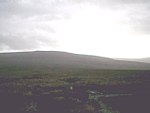Littledale Hall
1849 establishments in EnglandBuildings and structures in the City of LancasterCountry houses in LancashireE. G. Paley buildingsGrade II listed buildings in Lancashire ... and 1 more
Houses completed in 1849

Littledale Hall is a former country house in the civil parish of Caton-with-Littledale in Lancashire, England, some 10 miles (16 km) east of Lancaster. It is recorded in the National Heritage List for England as a designated Grade II listed building.It dates from 1849 and, in the absence of documentary evidence, its design has been attributed on stylistic grounds to the Lancaster architect E. G. Paley. It is constructed in sandstone with slate roofs, and is in Gothic style.
Excerpt from the Wikipedia article Littledale Hall (License: CC BY-SA 3.0, Authors, Images).Littledale Hall
Roeburndale Road, Lancaster Caton-with-Littledale
Geographical coordinates (GPS) Address External links Nearby Places Show on map
Geographical coordinates (GPS)
| Latitude | Longitude |
|---|---|
| N 54.05235 ° | E -2.66322 ° |
Address
Roeburndale Road
LA2 9HF Lancaster, Caton-with-Littledale
England, United Kingdom
Open on Google Maps







